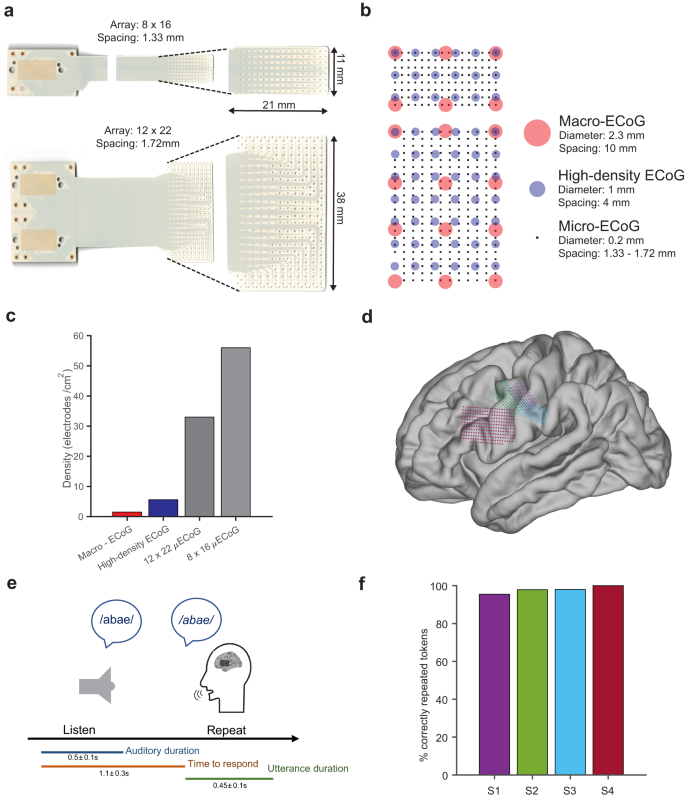2023-11-06 デューク大学(Duke)
◆現在の音声解読速度は遅く、約78語/分ですが、人々の話す速度は約150語/分です。この新技術は、将来的に遺伝子検査ができない患者のために、より迅速で正確なコミュニケーション手段を提供する可能性があります。
<関連情報>
- https://today.duke.edu/2023/11/duke-scientists-create-brain-implant-may-enable-communication-thoughts-alone
- https://www.nature.com/articles/s41467-023-42555-1
高解像度の神経記録により、音声解読の精度が向上。 High-resolution neural recordings improve the accuracy of speech decoding
Suseendrakumar Duraivel,Shervin Rahimpour,Chia-Han Chiang,Michael Trumpis,Charles Wang,Katrina Barth,Stephen C. Harward,Shivanand P. Lad,Allan H. Friedman,Derek G. Southwell,Saurabh R. Sinha,Jonathan Viventi & Gregory B. Cogan
Nature Communications Published:06 November 2023
DOI:https://doi.org/10.1038/s41467-023-42555-1

Abstract
Patients suffering from debilitating neurodegenerative diseases often lose the ability to communicate, detrimentally affecting their quality of life. One solution to restore communication is to decode signals directly from the brain to enable neural speech prostheses. However, decoding has been limited by coarse neural recordings which inadequately capture the rich spatio-temporal structure of human brain signals. To resolve this limitation, we performed high-resolution, micro-electrocorticographic (µECoG) neural recordings during intra-operative speech production. We obtained neural signals with 57× higher spatial resolution and 48% higher signal-to-noise ratio compared to macro-ECoG and SEEG. This increased signal quality improved decoding by 35% compared to standard intracranial signals. Accurate decoding was dependent on the high-spatial resolution of the neural interface. Non-linear decoding models designed to utilize enhanced spatio-temporal neural information produced better results than linear techniques. We show that high-density µECoG can enable high-quality speech decoding for future neural speech prostheses.


